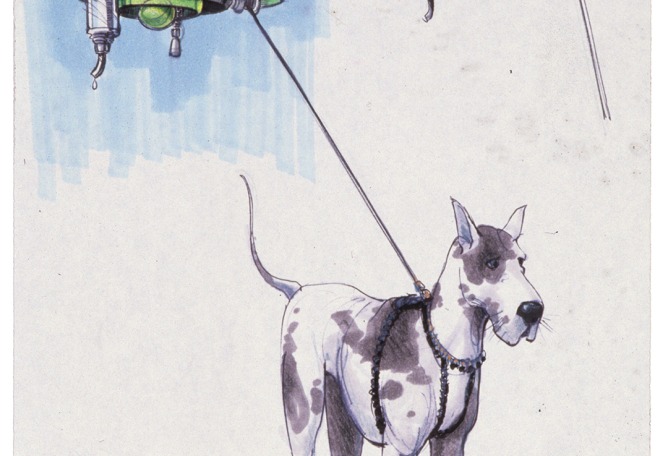J.B. You have started with the easy question, right? It’s really difficult; I know Apple is toying with the idea of designing a car. I saw their design and made me think that the way I would approach that problem is to make the car more like a telephone, like a smartphone. The cool thing about a s smartphone is that is very individual when it wants to be but it is very connected to others when it wants to be. I think if you can make a car or something that moves you around in a little pod so to speak, and people are in different bubbles doing their things but if they, later on, want to communicate, the cars get next to each other, more cars can join and becomes this big thing that moves throughout an environment. And when is the end of the night and you end what you had to do, you separate again, like phones. That is the way I would approach personal mobility in the future, I think digital mobility is fine but we still need that human interaction.
L.M. Last year was the “Back to the future’s” future day. If you were asked today to design the Hoverboard of 2045, would it be very different from the one you designed in 1985?
J.B. Yes, because my influences are so different since that time, they have changed and grown. Technology, the way a see it now, is so streamlined. I think that having that independent motion would be probably a starting point for me. It would be something very portable that you can slip into your pocket and pull it out and you can get on it and ride it. There are so many possibilities!
L.M. What are your priorities when designing stage sets or devices like the Hoverboard? The technical feasibility or the aesthetic impact on screen?
J.B. It is really the impact on screen. Whatever you design for film has to be easily understood, very quickly, because of the cameras’ motion. If you design a building, a vehicle, a hoverboard, a costume even, the audience has to connect with it very quickly. In architecture, you can walk around the building for hours, inside and outside, really experience it, touch it... You can really get to work with the space, but in films it has to be much more rapid. So, as far as a priority, it depends on the production you are designing for, because they usually set your priorities for you.
L.M. In your conference and later in the talk after the projection of “Back to the Future II”, you said that European art and fashion where your influences when designing the city and the elements of the future. It is funny, because in Europe we would look at Asia or North America when thinking about the cities’ future and we would definitely look at Hollywood in terms of modernity in cinema. Why do you think we see each other this way?
J.B. It is about familiarity. For me, seeing the same cars on the road, people wearing the same clothes everyday, there is nothing new about it for me, to look into Japanese culture, Chinese art and architecture, European magazines, etc., it’s just fresh and different and I think a lot of Americans do not look outside of themselves. I have always been enamoured with what other countries have to offer, it is so much richer and different and unique. The reason is that countries in Europe are smaller, America has a lot of different tastes, from New York to Los Angeles to Texas, to all the different states in the middle, and I think American design is watered down, more plain and not much interesting. But here you only have to serve a smaller population so I think you can be much more bold with designs. I have seen all the French and Spanish cars driving around and I want to drive them all, because all are so different and fun and very bold with their shapes.
L.M. Are you working on any project right now?
J.B. I’m not working on any films right now but I have just finished some storyboards for a Spielberg’s movie based on a book called “Ready player One” which is supposed to come up next year . I’m also doing some work in a Star Wars videogame project, and also working with a VR company, designing some characters. A lot of different things! For me everything lies under design.































